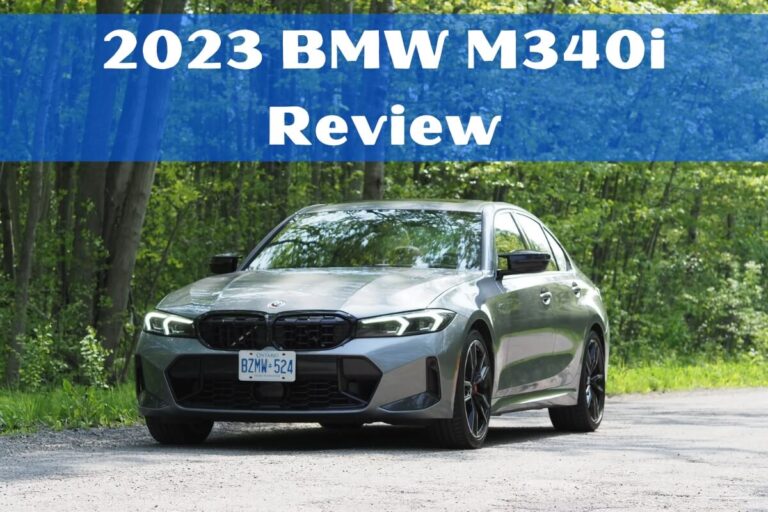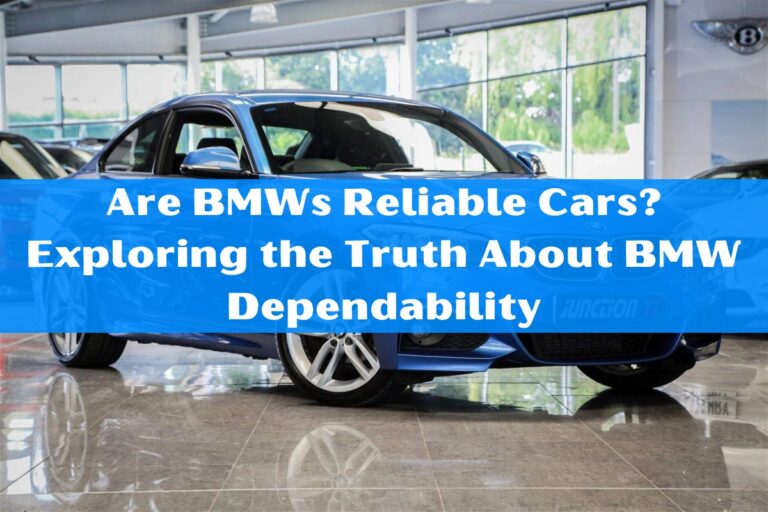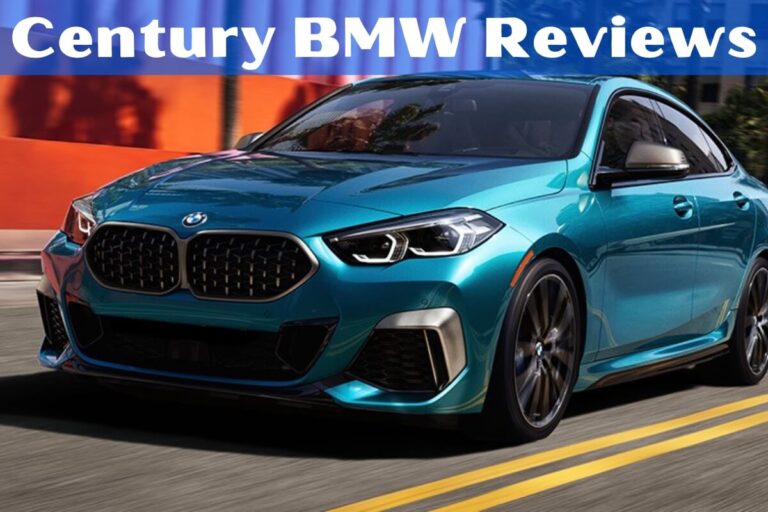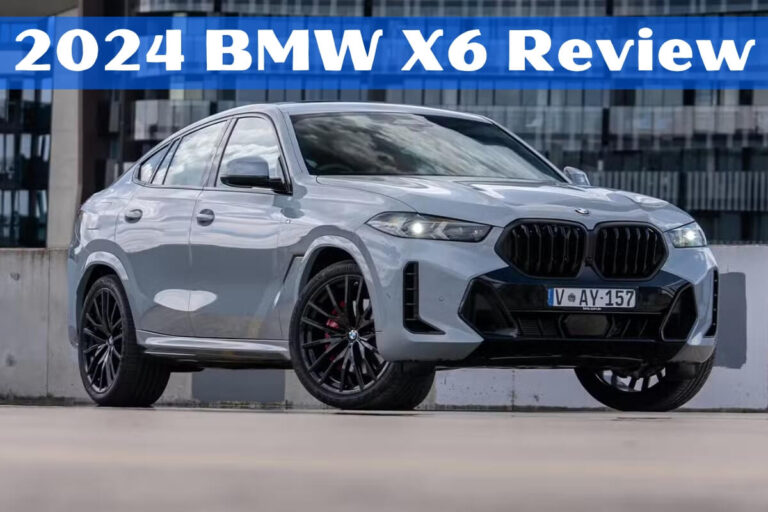BMW X1 vs X2: Choosing the Right Compact BMW SUV

Are you in the market for a small luxury SUV and torn between the BMW X1 and X2? Don’t worry, you’re not alone. These two compact SUVs from BMW are quite similar yet offer distinct differences that cater to varying needs and preferences.
Choosing between the BMW X1 and X2? We’ve got you covered. We’ll break down the key differences between these two popular SUVs, from design and performance to features and functionality. Our comparison will give you a clear understanding of which model best fits your needs and preferences.
The BMW X1 and X2 are part of the German automaker’s lineup of small premium SUVs. While they share some underpinnings and components, they diverge in key areas like body style, interior space, and even performance options.
The X1 is a traditional compact SUV, offering a more practical and spacious interior, while the X2 takes a sportier approach with its coupe-like sloping roofline and sleeker exterior design. Both models come well-equipped with luxury features and powerful yet efficient engine choices.
So, which one should you choose – the X1 or the X2? Let’s explore their differences in detail to help you make the right decision based on your specific needs and preferences.
Exterior Design and Styling
When it comes to exterior styling, the BMW X1 and X2 are quite distinct from one another. The X1 adheres to a more traditional SUV design language, featuring a boxy and upright stance with ample ground clearance. Its dimensions are slightly larger than the X2, measuring 176.4 inches in length, 72.6 inches in width (without mirrors), and 63.0 inches in height.
On the other hand, the BMW X2 takes a sportier and more dynamic approach with its coupe-like silhouette. It has a sloping roofline that gives it a sleeker and more aerodynamic look, but also compromises on rear headroom. The X2 measures 172.2 inches long, 71.8 inches wide (without mirrors), and 60.1 inches tall, making it slightly more compact than the X1.
Both models feature BMW’s signature kidney grille and sleek LED headlights, but the X2’s grille is more prominent and aggressive-looking. The X2 also has a unique C-pillar design that creates a “floating roof” effect, adding to its sporty aesthetic.
Overall, if you prefer a more muscular and athletic SUV appearance, the BMW X2 is the way to go. However, if you prioritize a more traditional and practical SUV design, the X1 might suit your tastes better.
Interior Design and Cabin Space
While the exterior designs of the X1 and X2 differ significantly, their interiors share more similarities than differences. Both models offer premium materials, excellent build quality, and a host of high-tech features that you’d expect from a luxury brand like BMW.
The X1’s cabin is more spacious and practical, with a generous amount of headroom and legroom for both front and rear passengers. It offers 39.4 inches of legroom in the front and 37.0 inches in the rear, making it comfortable for taller individuals. The X1 also boasts a larger cargo area, with 27.1 cubic feet of space behind the rear seats and 58.7 cubic feet with the rear seats folded down.
In contrast, the X2’s sloping roofline slightly compromises rear headroom, but it still offers a decent amount of space for most passengers. The front legroom is identical to the X1 at 39.4 inches, but rear legroom is slightly tighter at 36.7 inches. Cargo capacity is also slightly less, with 21.6 cubic feet behind the rear seats and 47.9 cubic feet with the seats folded.
Both SUVs come standard with BMW’s iDrive infotainment system, which can be controlled via a touchscreen display or the rotary controller on the center console. The system is intuitive and user-friendly, offering a wide range of features like navigation, Apple CarPlay, and Android Auto compatibility.
In terms of interior design, the X1 and X2 share a similar aesthetic, with a driver-focused cockpit and high-quality materials like leather upholstery and aluminum trim accents. However, the X2’s interior has a slightly sportier vibe, with more aggressive styling cues and contrasting color schemes.
If you frequently carry taller passengers or need maximum cargo space, the BMW X1 is the more practical choice. However, if you don’t mind sacrificing some interior room for a sportier and more dynamic ambiance, the X2 could be the better fit.
Performance and Driving Dynamics
Both the BMW X1 and X2 offer a range of powerful and efficient engine options, catering to different performance needs and preferences.
The X1 is available with three turbocharged engine choices:
- 2.0-liter TwinPower Turbo inline-4 (228 hp, 258 lb-ft torque)
- 2.0-liter TwinPower Turbo inline-4 (248 hp, 258 lb-ft torque)
- 1.5-liter TwinPower Turbo inline-3 hybrid (180 hp combined, 194 lb-ft torque)
The X2 shares the same engine lineup as the X1, with the exception of the hybrid variant:
- 2.0-liter TwinPower Turbo inline-4 (228 hp, 258 lb-ft torque)
- 2.0-liter TwinPower Turbo inline-4 (248 hp, 258 lb-ft torque)
Both models are available with either front-wheel drive (sDrive) or all-wheel drive (xDrive) configurations.
In terms of performance, the X2 has a slight edge over the X1 due to its lower curb weight and sportier tuning. The top-of-the-line M35i variant of the X2, which is not available for the X1, packs a potent 2.0-liter TwinPower Turbo inline-4 engine that produces 301 horsepower and 332 lb-ft of torque. This model can accelerate from 0 to 60 mph in just 4.9 seconds, making it the performance king of the duo.
When it comes to driving dynamics, the X2’s lower center of gravity and sportier suspension tuning give it a more engaging and agile driving experience, especially when equipped with the M Sport package. However, the X1 still offers a great balance of comfort and handling, making it a more well-rounded option for daily driving.
If outright performance is your top priority, the BMW X2, especially in the M35i guise, is the clear winner. However, if you prefer a more comfortable and balanced driving experience, the X1 might be the better choice.
Trim Levels and Configurations
Both the BMW X1 and X2 offer a range of trim levels and configurations to cater to different budgets and preferences.
For the X1, the trim levels are:
- X1 sDrive28i (228 hp, front-wheel drive)
- X1 xDrive28i (228 hp, all-wheel drive)
- X1 sDrive35i (248 hp, front-wheel drive)
- X1 xDrive35i (248 hp, all-wheel drive)
- X1 xDrive28e (180 hp hybrid, all-wheel drive)
The X2 trims are:
- X2 sDrive28i (228 hp, front-wheel drive)
- X2 xDrive28i (228 hp, all-wheel drive)
- X2 M35i (301 hp, all-wheel drive)
Both models offer various packages and individual options to further customize the vehicle. Some popular options include the M Sport package, which adds sportier styling cues and upgraded suspension components, as well as technology packages that include features like a head-up display, wireless charging, and more.
It’s worth noting that the BMW X1 offers a wider range of trim levels, including the plug-in hybrid variant (X1 xDrive28e), which is not available for the X2. This could be an important consideration for those who prioritize fuel efficiency and lower emissions.
Overall, the X1 provides more flexibility in terms of trim levels and configurations, while the X2 focuses more on performance and style with its top-tier M35i variant.
Fuel Economy and Hybrid Options
The X1 sDrive28i and xDrive28i models, powered by the 2.0-liter TwinPower Turbo inline-4 engine, are rated at 25 mpg city and 34 mpg highway for the front-wheel-drive variant, and 24 mpg city and 33 mpg highway for the all-wheel-drive model.
The more powerful X1 sDrive35i and xDrive35i trims, with the 2.0-liter TwinPower Turbo inline-4 producing 248 hp, have slightly lower fuel economy ratings of 23 mpg city and 32 mpg highway for the front-wheel-drive version, and 22 mpg city and 31 mpg highway for the all-wheel-drive model.
The real fuel efficiency champion in the X1 lineup is the plug-in hybrid X1 xDrive28e, which can travel up to 35 miles on electric power alone. When combined with the gasoline engine, it gets an impressive 64 MPGe (miles per gallon equivalent) rating.
As for the BMW X2, the sDrive28i and xDrive28i models share the same fuel economy ratings as their X1 counterparts, thanks to the identical powertrain. However, the high-performance X2 M35i, with its 301 hp engine, sees a drop in efficiency, achieving 23 mpg city and 30 mpg highway.
Unfortunately, the X2 does not offer a hybrid or electric variant as of now, which could be a drawback for those seeking maximum fuel efficiency and reduced emissions.
Safety Ratings and Features
Both the BMW X1 and X2 have received excellent safety ratings from various organizations, thanks to their sturdy construction and advanced safety features.
The 2023 BMW X1 earned a 5-star overall safety rating from the National Highway Traffic Safety Administration (NHTSA), while the Insurance Institute for Highway Safety (IIHS) awarded it with the highest possible rating of “Good” in all crashworthiness tests.
Similarly, the 2023 BMW X2 received a 5-star overall safety rating from NHTSA and earned the top “Good” rating in most IIHS crashworthiness tests.
In terms of standard safety features, both models come equipped with a comprehensive suite of advanced driver assistance systems, including:
- Forward Collision Warning with Automatic Emergency Braking
- Lane Departure Warning with Lane Keep Assist
- Blind Spot Monitoring with Rear Cross-Traffic Alert
- Pedestrian Detection
- Rearview Camera with Active Parking Assist
Additionally, BMW offers optional safety packages that add features like Adaptive Cruise Control, Front Cross-Traffic Alert, a Surround View Camera system, and more.
Overall, both the X1 and X2 offer excellent safety credentials, with top safety ratings and a comprehensive range of advanced driver assistance technologies. You can rest assured that whichever model you choose, you’ll be getting a safe and well-protected vehicle.
Pricing and Value
When it comes to pricing, the BMW X1 and X2 are relatively close, with the X2 being slightly more expensive due to its sportier positioning and the availability of the high-performance M35i variant.
The 2023 BMW X1 has a starting MSRP of $38,600 for the sDrive28i front-wheel-drive model, while the xDrive28i all-wheel-drive variant starts at $40,600. The top-of-the-line X1 xDrive35i carries a starting price of $44,200.
On the other hand, the 2023 BMW X2 sDrive28i has a base MSRP of $39,600, and the xDrive28i starts at $41,600. The range-topping X2 M35i has a significantly higher starting price of $48,500.
It’s worth noting that these prices can quickly escalate as you add optional packages, exterior colors, interior materials, and other accessories. A fully loaded X1 or X2 can easily cross the $50,000 mark, putting them in the same price range as larger and more expensive luxury SUVs from BMW and other premium brands.
In terms of value, both the X1 and X2 offer a compelling package of luxury, performance, and technology. However, the X1 might be considered a better value proposition, especially in its lower trims, as it offers more interior space and practicality for a slightly lower price point compared to the X2.
The X2, on the other hand, justifies its higher price tag with its more dynamic styling and the availability of the high-performance M35i variant, making it a better choice for those prioritizing sportiness and driving excitement over outright practicality.
Final Checkpoint
After an in-depth comparison of the BMW X1 and X2, it’s clear that both models have their unique strengths and cater to different buyer preferences.
The BMW X1 is the more practical and family-friendly choice, offering ample interior space, a larger cargo area, and the availability of a fuel-efficient plug-in hybrid variant. It’s the ideal choice for those who value utility and versatility in their compact SUV.
On the other hand, the BMW X2 is the sportier and more stylish option, with its coupe-like silhouette, dynamic handling characteristics, and the availability of the high-performance M35i model. If you prioritize a more engaging driving experience and a sleek, eye-catching design, the X2 might be the better fit.
Ultimately, the decision between the X1 and X2 comes down to your specific needs and preferences. If you frequently carry taller passengers or require maximum cargo space, the X1 is the more sensible choice. However, if you’re willing to sacrifice some interior room for a more dynamic and stylish SUV, the X2 could be the perfect companion.
Regardless of your choice, you can rest assured that both the BMW X1 and X2 offer exceptional build quality, advanced technology features, and the driving pleasure that BMW is renowned for. So, take the time to carefully consider your priorities, and you’ll undoubtedly end up with a compact SUV that perfectly suits your lifestyle.






